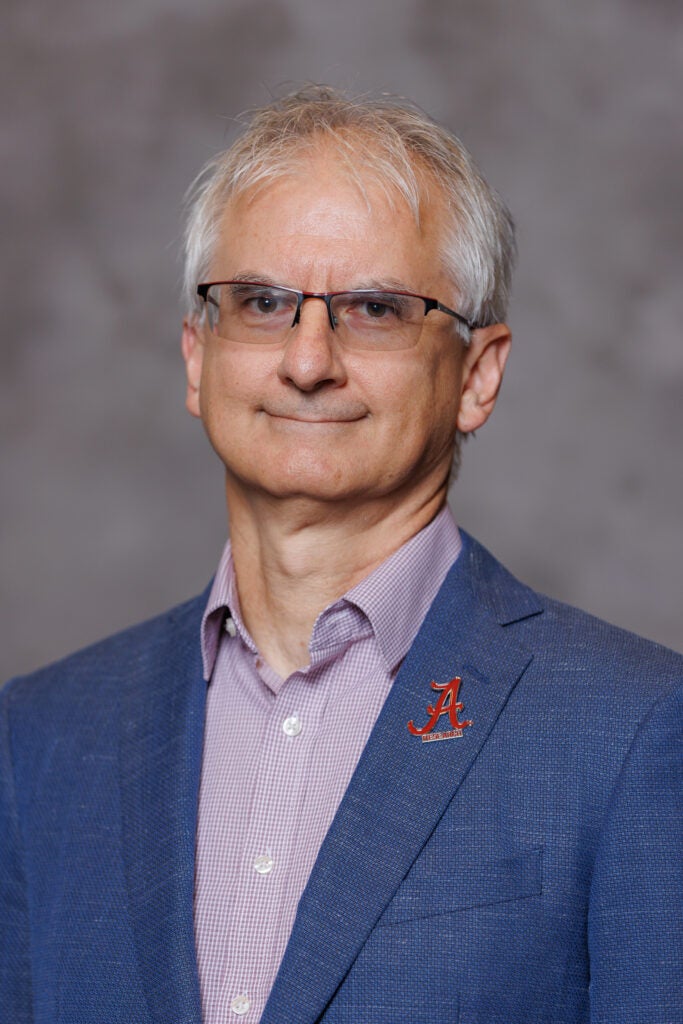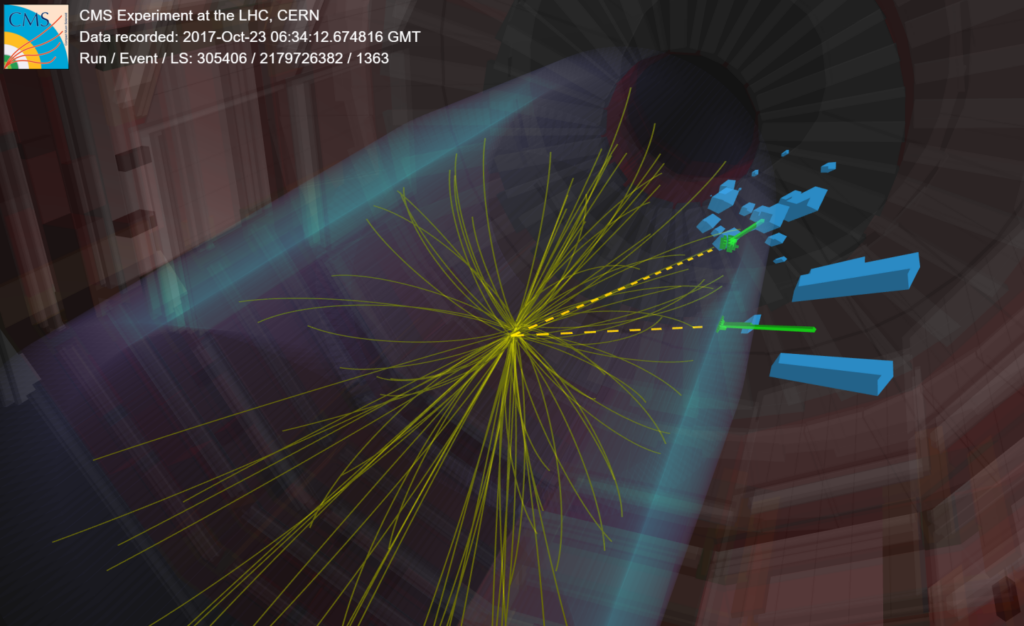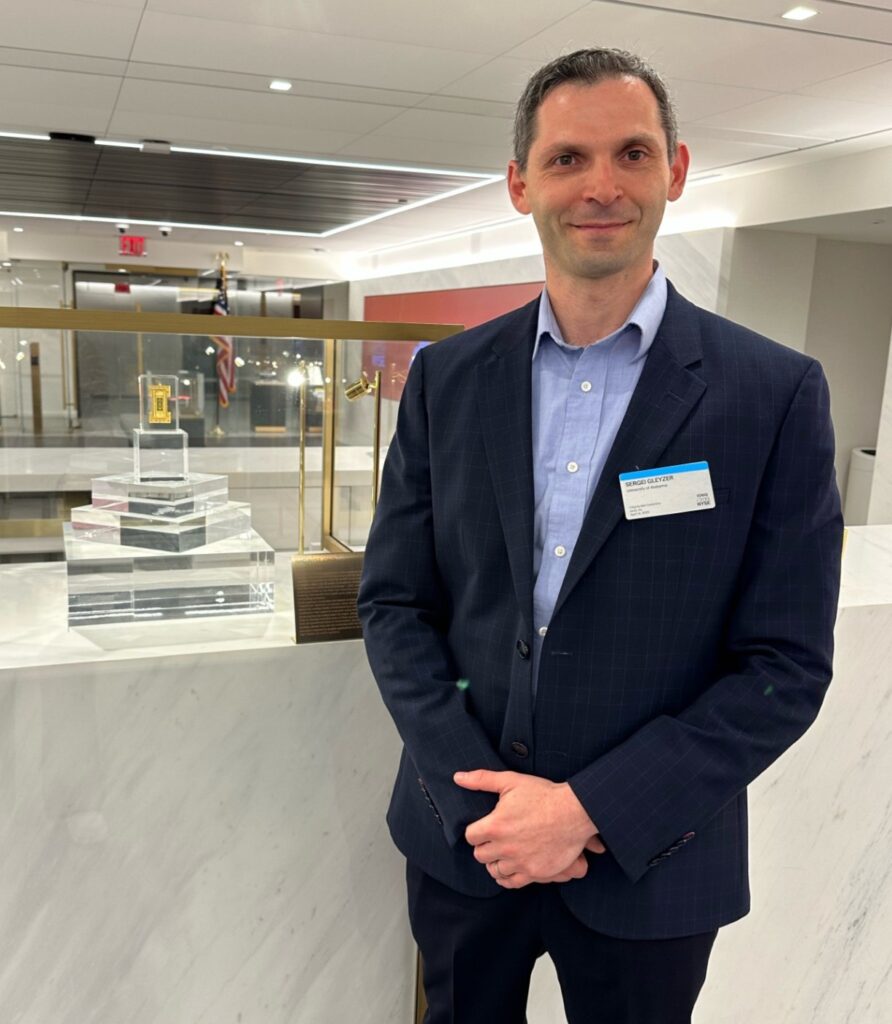Say you’re looking for an adjective. This adjective needs to communicate “the future” and “science” and “technology.” It must imply hidden dimensions, impossible speed and movies set on spaceships. Your audience should imagine very smart people doing very smart things.
The word you want is “quantum.”
Despite its association with cutting-edge science, quantum is actually an old word with Latin origins. In physics, it refers to the study of the universe’s smallest observable parts. Marking the 100th anniversary of the first quantum mechanics paper ever published, 2025 is officially the International Year of Quantum.
At The University of Alabama, the quantum era is already well underway.
As a mark of UA’s already growing national prominence in the field, it was featured in a video series produced by the American Physical Society. APS showed the video at its annual conference in March of this year.
A new face in UA quantum

Earlier this year, UA’s Barefield College of Arts and Sciences welcomed particle physicist Dr. Konstantin Matchev as the inaugural Endowed Shelby Distinguished Professor. Matchev is internationally ranked as the 70th most-cited scholar in his field and has worked at the top physics labs in the world.
In joining UA, Matchev was drawn to the talent already present among students and faculty. He is eager to help build a program that can show up on the world stage. A key driver of scientific research at that level is collaboration.
“Research now is very collaborative,” Matchev said. “Projects are more complex, and it has become impossible for one group to do everything.”
The Compact Muon Solenoid Collaboration, for example, is an international team of more than 4,500 scientists recently awarded the 2025 Breakthrough Prize in Fundamental Physics, colloquially called the “Oscars of Science.” Matchev is one of four UA faculty affiliated with the CMS collaboration, alongside experimental physics faculty Sergei Gleyzer, Paolo Rumerio and Emanuele Usai. The effort also offers opportunities to more than twenty UA postdoctoral fellows, scientists, graduate students and undergraduate students.

“I expected, and indeed it has been the case, to find a lot of opportunities for collaboration at UA,” he said. He credits the University administration and a culture that supports collaboration for the foundations already built and the exciting future of physics and quantum computing at UA.
Matchev believes he and other theoretical physicists are in a prime position to continue adapting machine learning techniques to quantum computing. And in turn, quantum computing may revolutionize their field.
“At the microscopic scale, physics is quantum,” he said. “So when it comes to the quantum phenomena that we often study in physics, a quantum computer will be a better representation of the reality that we’re studying.”
We aren’t there yet, he cautioned. The field is still in its infancy.
“This is a disruptive technology. It holds a lot of promise, but it’s very young and very new.”
Matchev wants to give UA students an edge in the quantum future he anticipates. His department is preparing to offer UA’s first courses in quantum computing and quantum machine learning, in fall 2025 and spring 2026.
“I taught a pilot course, just half a semester, a few years ago,” he said. “Some of those students graduated and got jobs in the quantum sector.” Several of them wrote him later to say that the course had given them an edge that ultimately secured their jobs.
Small gains, big results
Dr. Sergei Gleyzer, a professor in the Department of Physics and Astronomy, was into quantum computing before quantum computers even existed.
In recognition of his expertise, Governor Kay Ivey appointed Gleyzer to the Alabama Quantum Evaluation Task Force to represent all Alabama universities.
“I’ve been working in quantum computing for about 25 years,” he said. “There was a lot of theoretical work initially. It took some time for the hardware to catch up.”
He leads a research group focused on quantum algorithms and applications. They are pioneering the field of quantum machine learning. Some of their well-known contributions involve using machine learning to analyze Large Hadron Collider data and for exoplanet discovery.
Although the first experimental quantum computer was built as recently as 1998, their capabilities are rapidly expanding. Early machines had fewer than ten qubits. Less than a decade in, we are seeing qubits in the hundreds on the newest frontier devices.

“Each additional quantum bit represents an exponential increase in the potential of these devices,” Gleyzer said.
Because of the greater expressivity of quantum computing, these apparently small gains mean a great deal in terms of performance. One example where quantum algorithms have an advantage over classical ones is when we have more variables and less information. For example, in drug discovery.
“There are so many compounds and so many things to search for,” he said. “It’s a huge optimization problem. But the bigger the problem and the bigger the search space, the bigger the advantage of the quantum version of the algorithm.”
The threshold for quantum algorithms surpassing classical machine learning capabilities is fast approaching. We aren’t on the cusp of kicking the old methods to the curb, though. Quantum machines are still rare, expensive and rather overpowered for most uses.
Better together: hybrid quantum computing
One of the most promising areas of research is hybrid computing, coupling the strengths of traditional and quantum computing. In April, Gleyzer rang the bell at the close of the New York Stock Exchange in recognition of World Quantum Day alongside international dignitaries and industry leaders.

The discussions that followed highlighted the capabilities of these hybrid algorithms. For certain tasks, hybrid algorithms performed 10-20% better than classical machine learning alone. Given the relative youth of quantum computing, this was an important result.
On the horizon, Gleyzer sees quantum computing becoming vitally important in fields like cybersecurity, cryptography and communications. However, the applications that interest his group are practical ones, like solving the fundamental puzzles of physics and astronomy.
“If we’re dealing with atoms or molecules, whether it’s identifying the next best drug or learning their properties, then the right kind of algorithm could yield economic growth,” he said. Just imagine: quantum pharmaceuticals. It may not be as far away as you’d think.
